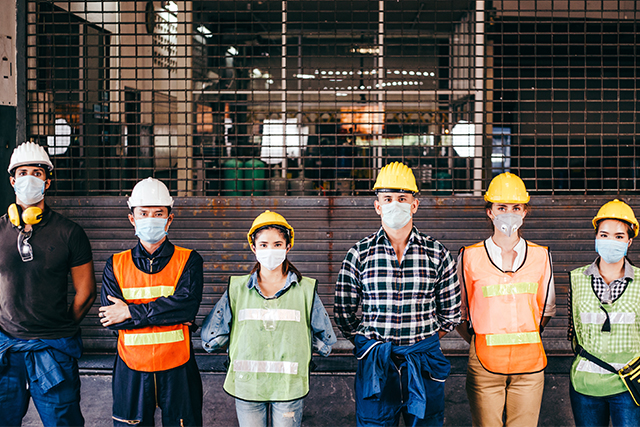Impact of COVID-19 on the Construction Industry
January 18, 2021For many workers, 2020 has been a year of adjusting to working from home. For many sectors, however, working from home is not an option, including the construction industry where, for obvious reasons, workers must be on site in order for progress to be made. This means those workers have a greater risk of exposure to COVID-19 – and studies have proven the virus has hit the construction industry hard.
In August, the CDC reported results of a Utah studythat showed the construction industry was the second highest for rates of workplace outbreaks, second only to the manufacturing industry. A similar study by the University of Texas at Austin COVID-19 Modeling Consortium found even more alarming results – Austin-area construction workers with COVID were five times more likely to be hospitalized than those in other occupations.
“According to the researchers, the higher vulnerability for construction workers probably stems from the continuation of construction work throughout the pandemic, even during stay-home orders and other community-wide mitigation measures,” reports UT News.
The Texas study mentioned a variety of factors that increase the risk to construction workers – the inability to stay home being a top factor – but also the lack of ability to social distance, employer practices, and demographics. Demographics, in particular, play a key role in the higher rates of both COVID and hospitalizations.
As reported in the Utah study, Hispanic and nonwhite workers accounted for 73% of workplace outbreak-associated COVID-19 cases. According to the Texas Department of State Health Services, Hispanics account for nearly 40% of all COVID cases and over 53% of COVID deaths in the state.
“Compared with the general population, they also experience more underlying health conditions linked to severe cases of COVID-19, are more likely to have more people in the home and may feel pressured to work even when they don’t feel well due to socioeconomic pressures,” says UT News.
Both the Utah and Texas study offer potential solutions for reducing the impact COVID has had on the construction industry – particularly for those more vulnerable populations.
“Health departments and employers need to ensure mitigation strategies are provided using culturally and linguistically responsive materials and messages, which reach workers of racial and ethnic minority groups,” states the CDC Utah study, “especially those disproportionately affected by workplace COVID-19 outbreaks.”
The Texas study also suggests that integrating regular site-based COVID testing and appropriate contact tracing and response to positive tests would mitigate the spread. Offering paid sick leave, incentives for staying at home, and standard precautions like mask wearing and distancing were other noted suggestions.
“It doesn’t necessarily mean we need to stop construction work,” said Lauren Ancel Meyers, a professor of integrative biology and director of the consortium, in the UT News article. “It means we need to go to great lengths to ensure the health and safety of workers when they do go to work.”
To learn more about Capitol Tech’s degree programs in Construction Management and Critical Infrastructure, contact admissions@captechu.edu.



